The castle of Gallipoli, as it is seen today, is a singular palimpsest in which the part most commonly known as Renaissance with its “infamous” towers dominates. In a fortress, from a theoretical point of view, the entrance is a necessary, calculated, often multiple violation of structural unity: the dimensions of what was the North - East gate of the castle are about 2.60 meters (measurement on the largest side on the left as one enters) and a width of about 3.32 meters (measurement between the two opposite vertical guides of the portcullis).
The avenues of historical research are many and are sometimes constructed through evidence of disarming simplicity. What will be recounted falls into precisely the latter case.A door a little over three meters wide, the one that is strangely not found in the many historical reconstructions devoted to this fortress, the one with the housings in the wall for a portcullis to run vertically, the one facing the mainland, the one, finally, that made the entrance to the castle independent of the other western one accessible only from inside the city. That gate was always there in reality and was before the eyes of anyone who wanted to recognize it as such (Figs. 1 - 10).
The castle of Gallipoli, what can be seen today, is a marvelous palimpsest in which the part most commonly known as Renaissance dominates with its “infamous” towers (one polygonal, two circular, plus the “ghost” one that is there but cannot be seen, that is, the one that collapsed they say in the mid-eighteenth century). If the latter, eminent elements of defense, represented the point of safety for the besieged, for the eventual besiegers they were, on the other hand, a real worry indeed torment.
Another nodal point in castle design, besides the towers, was the entrance system. The term “system” was used not at random because in a fortress, from a theoretical point of view, the entrance is a necessary, calculated, often multiple violation of structural unity. That is, multiple entrances were built for reasons related to defense and thus security of the fortress. In fact, one often reads terms such as “rescue gate” or “false gate” referring to one or more additional entrances.
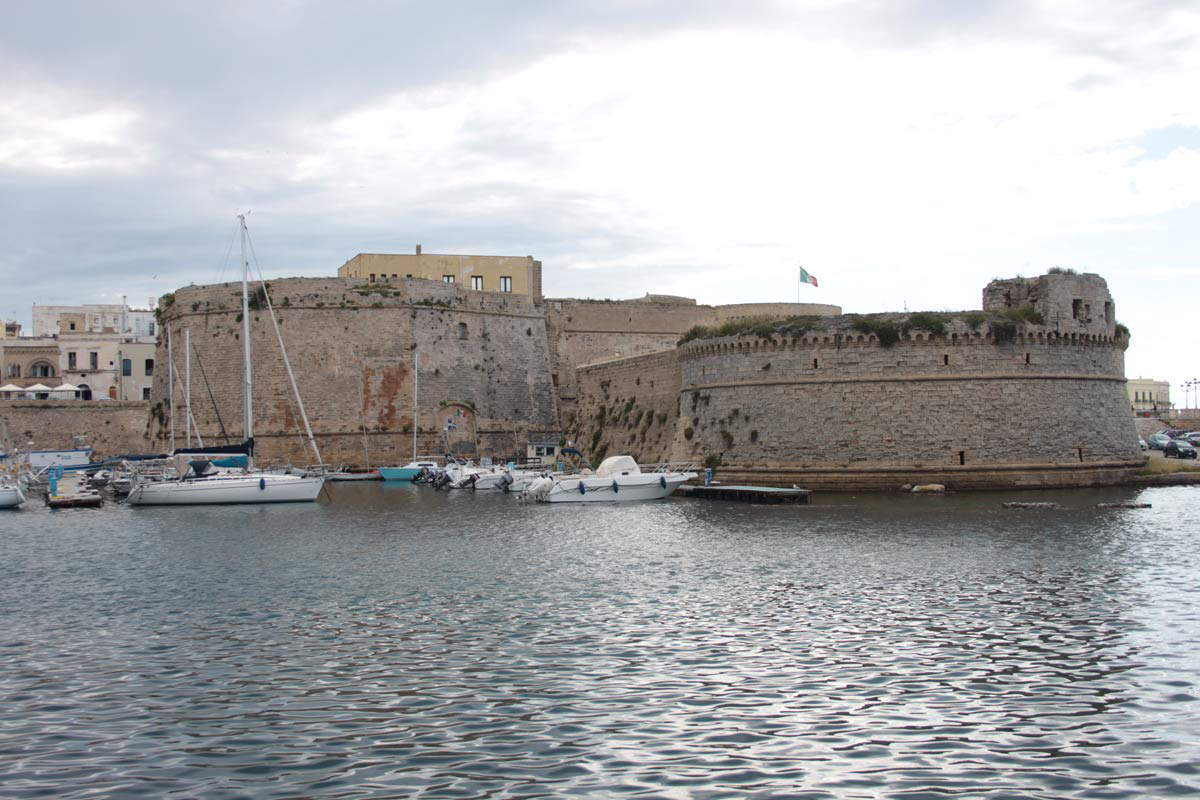
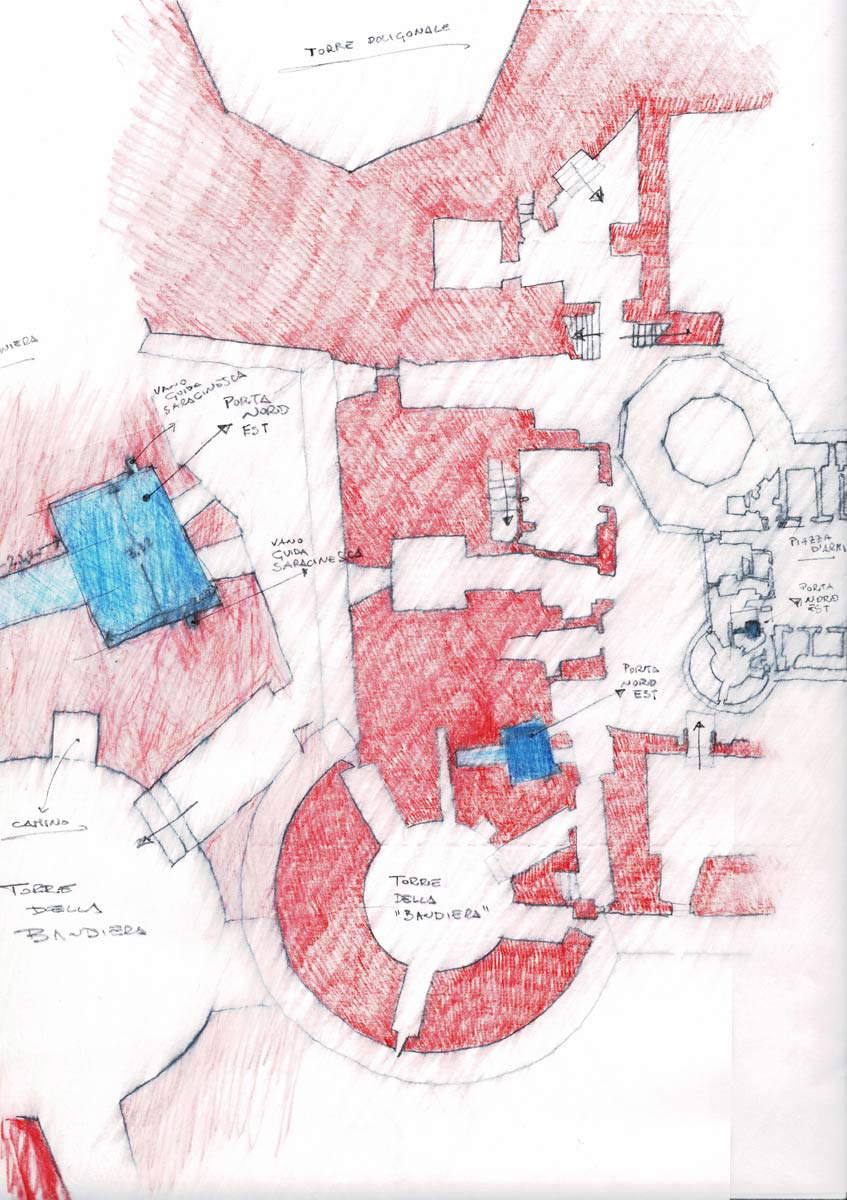

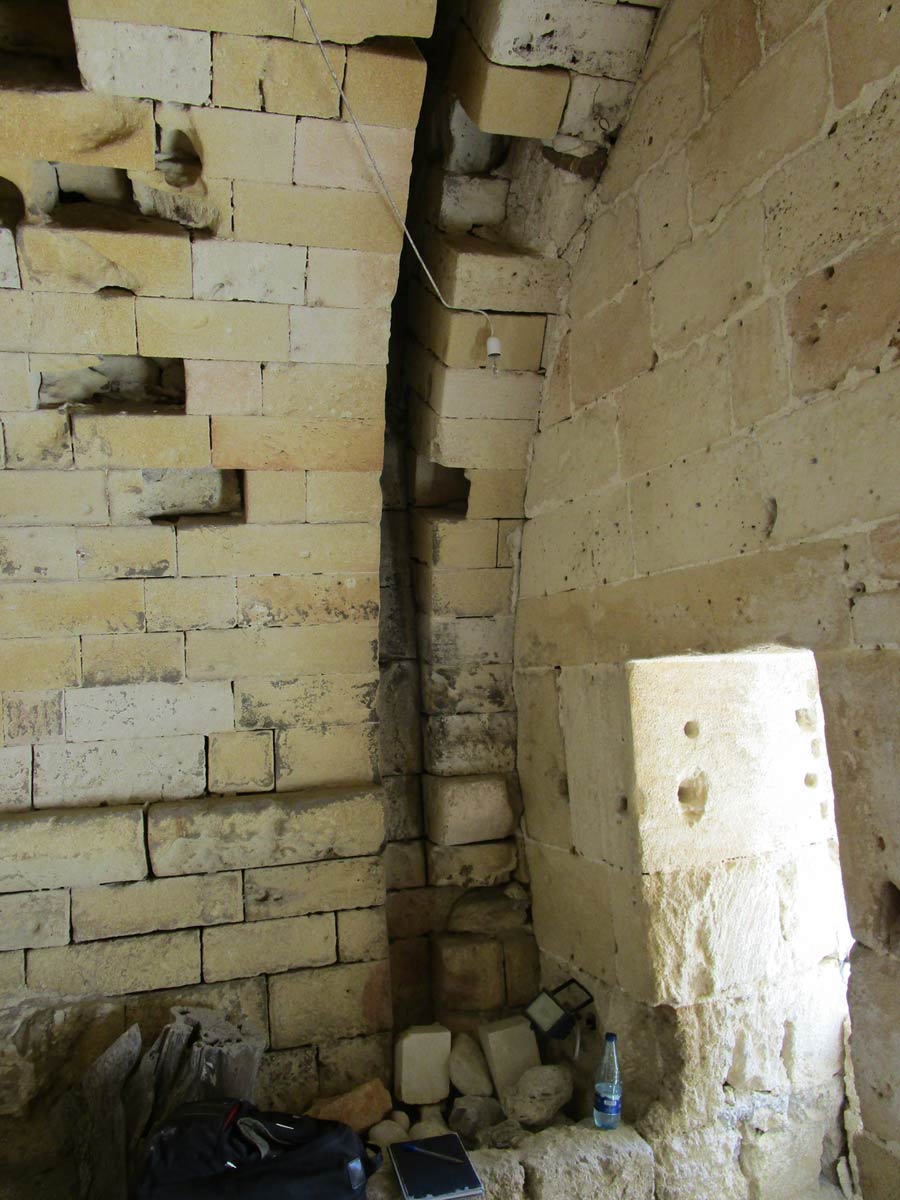
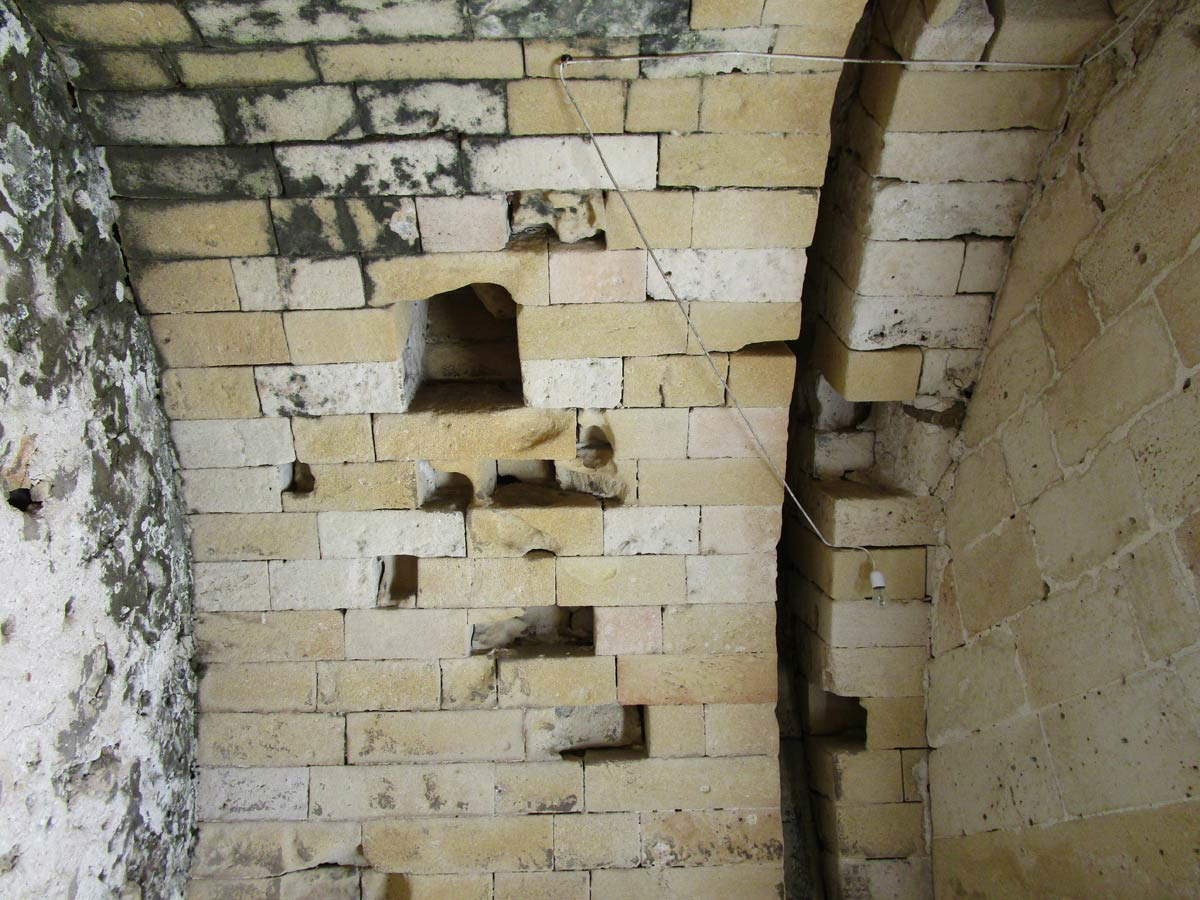
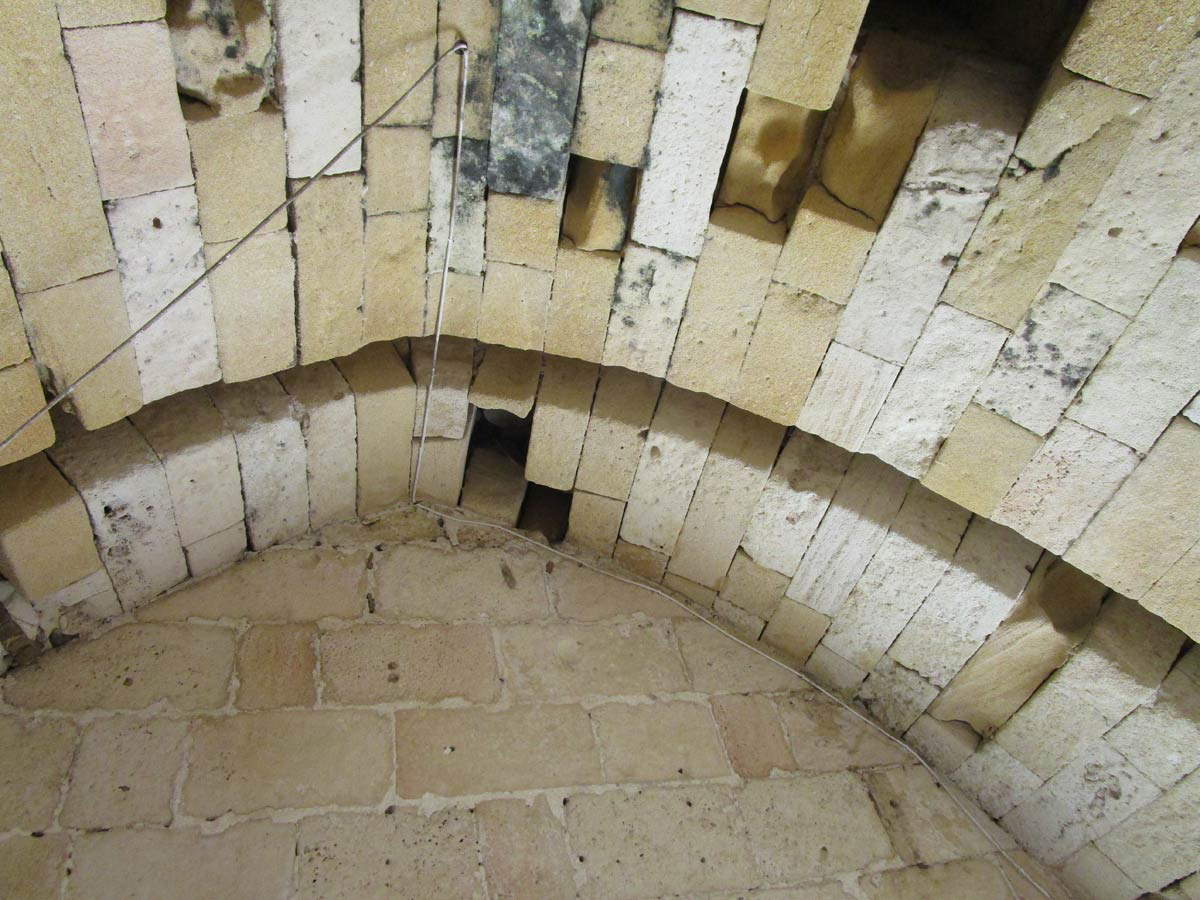
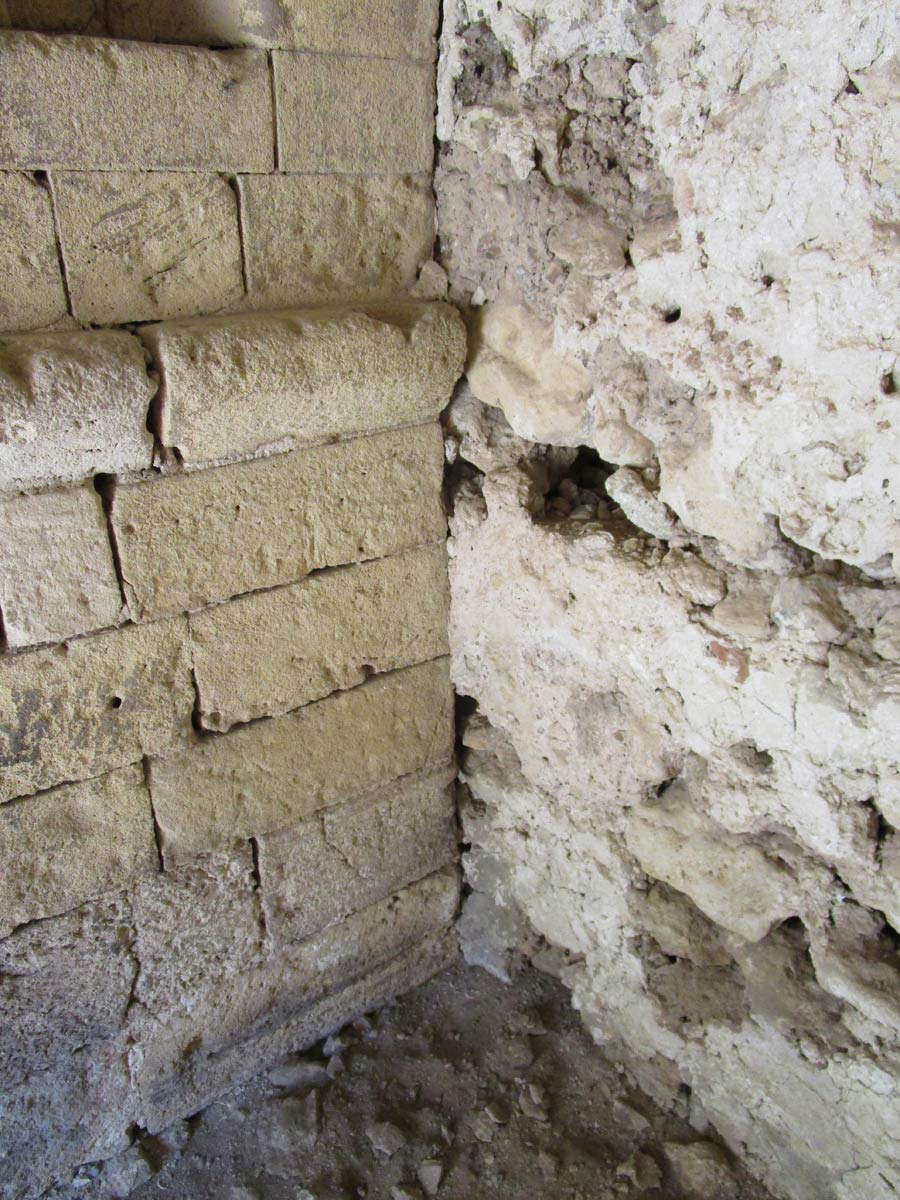
Together with those of Brindisi, Otranto and Taranto (all port cities), the castle of Gallipoli built a fundamental defensive system against attacks on the kingdom of Naples coming mainly from the East. In the fortress of the “beautiful city” there is a gateway open to the town and then another, on the same side and not far from the previous one, now covered by a smaller quadrangular tower. In turn, the latter is another interesting palimpsest precisely with respect to the theme of access to the fortress. That turret, leaning against the circular one known as the “lookout” tower (this one towers above the former in size) was placed in front of the (medieval) gateway vaulted on the north - west side of the fortress prior to the Renaissance reconstruction; the latter foresaw, plausibly in times not far from those in which the adjacent “lookout” tower was built, to the modification also of the access on the side facing the city (Figs. 11 - 12).
That older gateway made more secure with the new design, barely high enough for a man on horseback to pass through and decorated with a subdued pointed arch, on the inside, is followed, toward the East, by a deep, higher, ogival-vaulted room that constituted the access atrium of that fortress. That atrium was flanked on the south side (to the right as one enters) by the small church, “replaced” in the first half of the 17th century by a larger one near the present entrance.
The oldest door just described, it is useful to remember, is near the North - West corner of the fortress, the one found is, on the other hand, almost opposite the previous one, on the North - East corner
The dimensions of what was the North - East gate of access to the Gallipoli castle are about 2.60 meters (measurement on the largest side on the left as one enters) in depth and a width of about 3.32 meters (measurement between the opposite homologous points of the vertical rail of the portcullis). The room is bordered by a perimeter wall, the one facing the parade ground, which is not orthogonal to the two interior side walls. It should be noted in addition that this room has undergone functional transformations. The first and most important is that relating to the construction of a deep (about 2.42 meters, measured on its right side) artillery firing post at the time when this space ceased to be one of the entrances to the castle.
With respect to the available historical sources, no reference has been identified to a gate located toward the northeast corner of the fortress, the one with the obvious signs of a portcullis, the one open toward the mainland, the one, finally, that allowed access to the castle without needing to pass through the city, itself provided with an independent entrance i.e. the so-called Porta Terra. This last aspect, should it be confirmed, would re-propose an arrangement similar to that present in many other cases in which, precisely, one castle gate opened right inside the city and another to the outside (Lecce, Copertino, etc.). Such a northeast gate becomes even more interesting and significant in light of the documented conflicting relationships between castle and city and between the two powers they represented. One wonders, at this point, in the specific case of the Gallipoli castle prior to the present one, what was the main gate of this fortress. On the basis of the existing casuistry, it can be assumed that the primatial role of a gate is constructed through: its size, the adoption or not of a decorative apparatus by designer and patron (including heraldry), and last but not least the actual use that was made of it also in relation to the context.

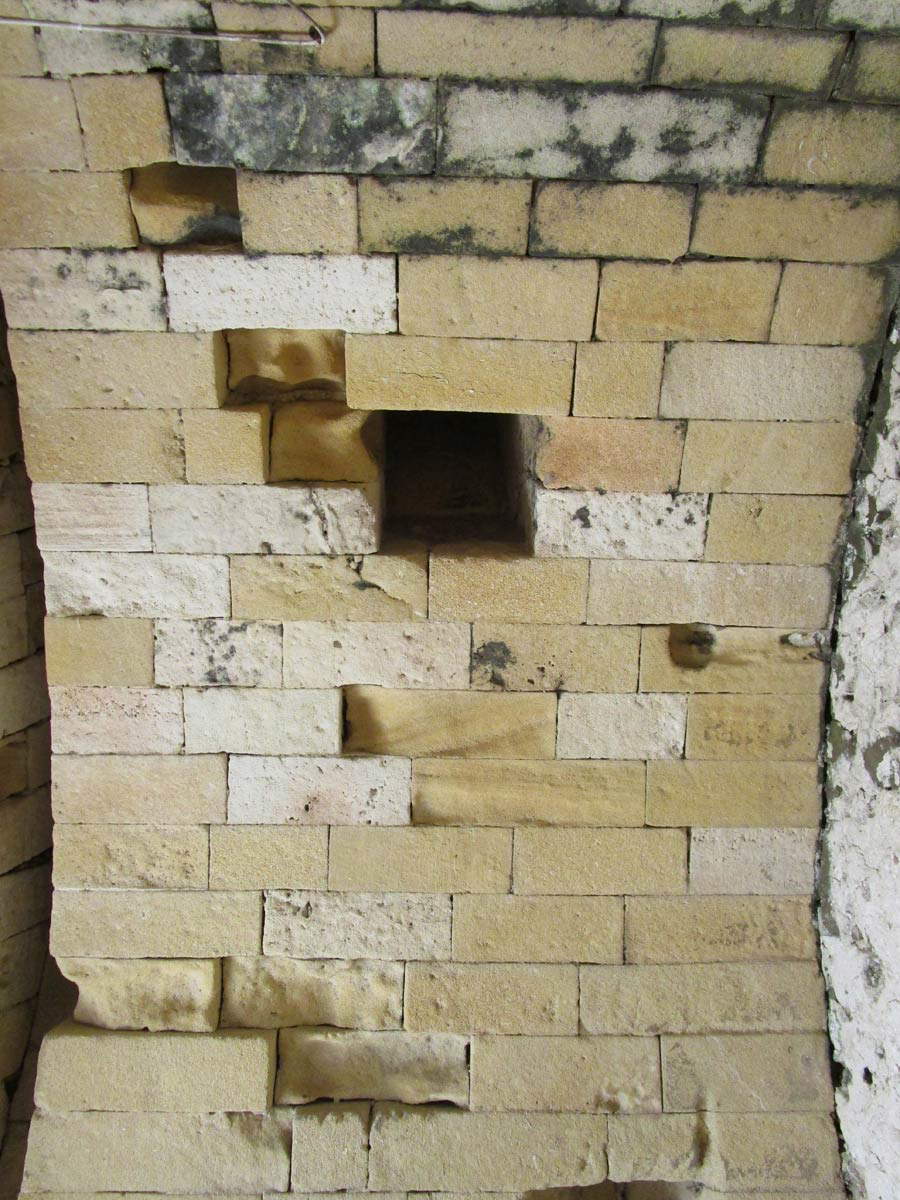
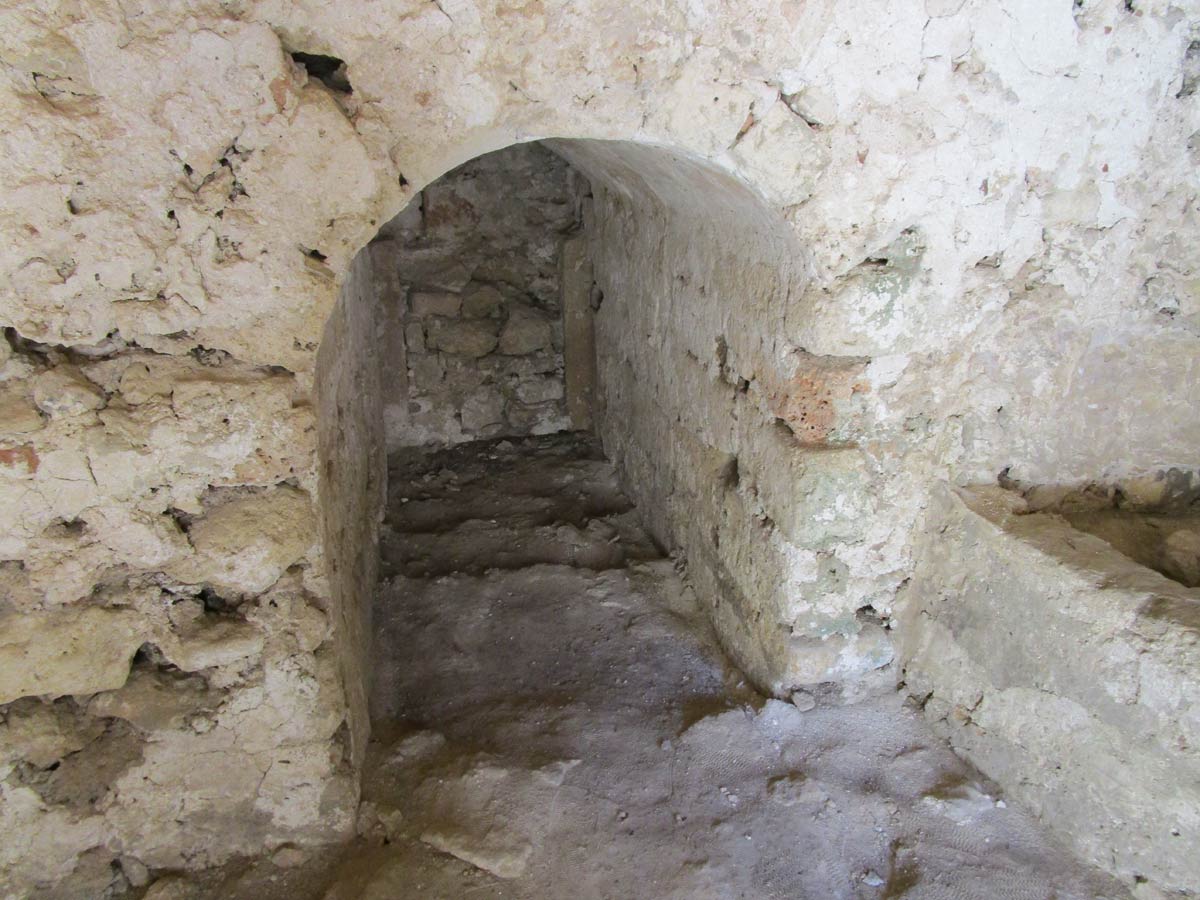
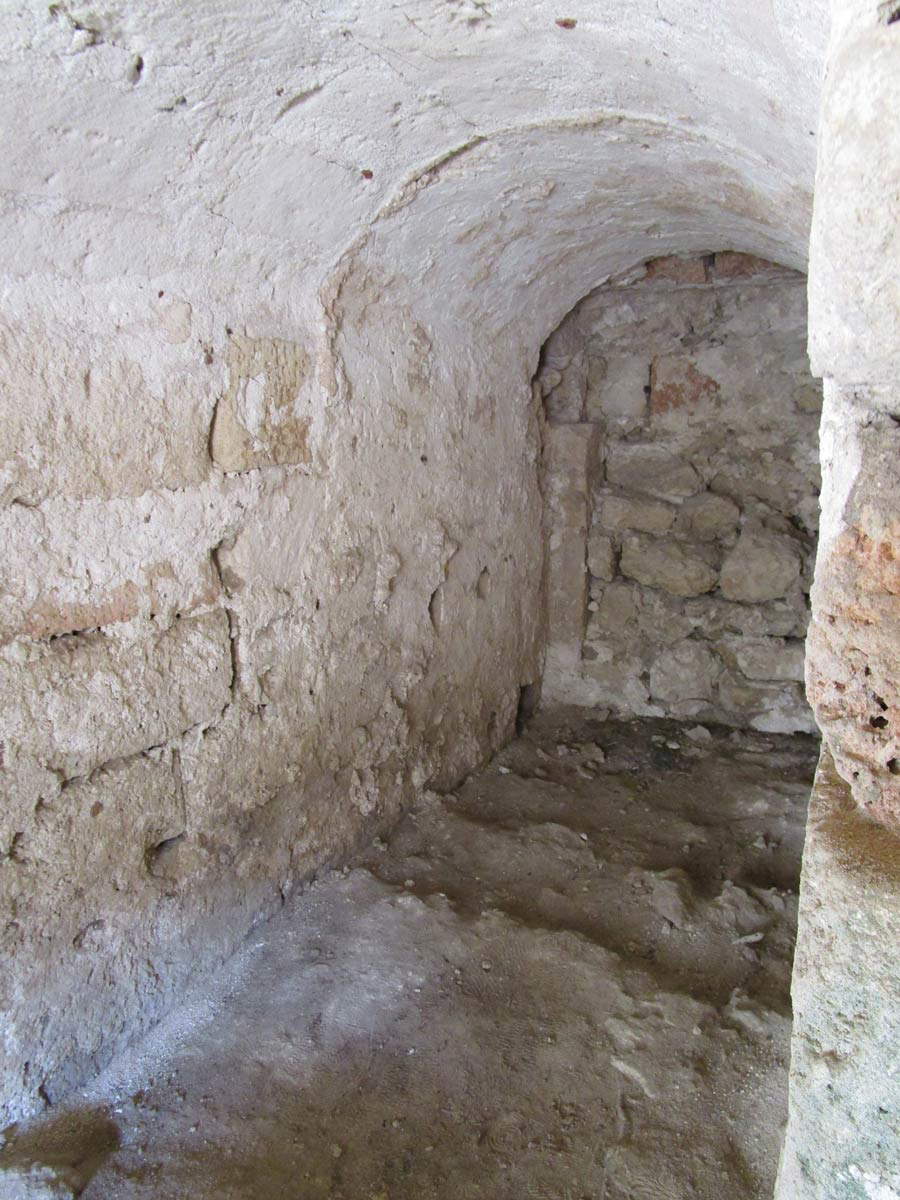
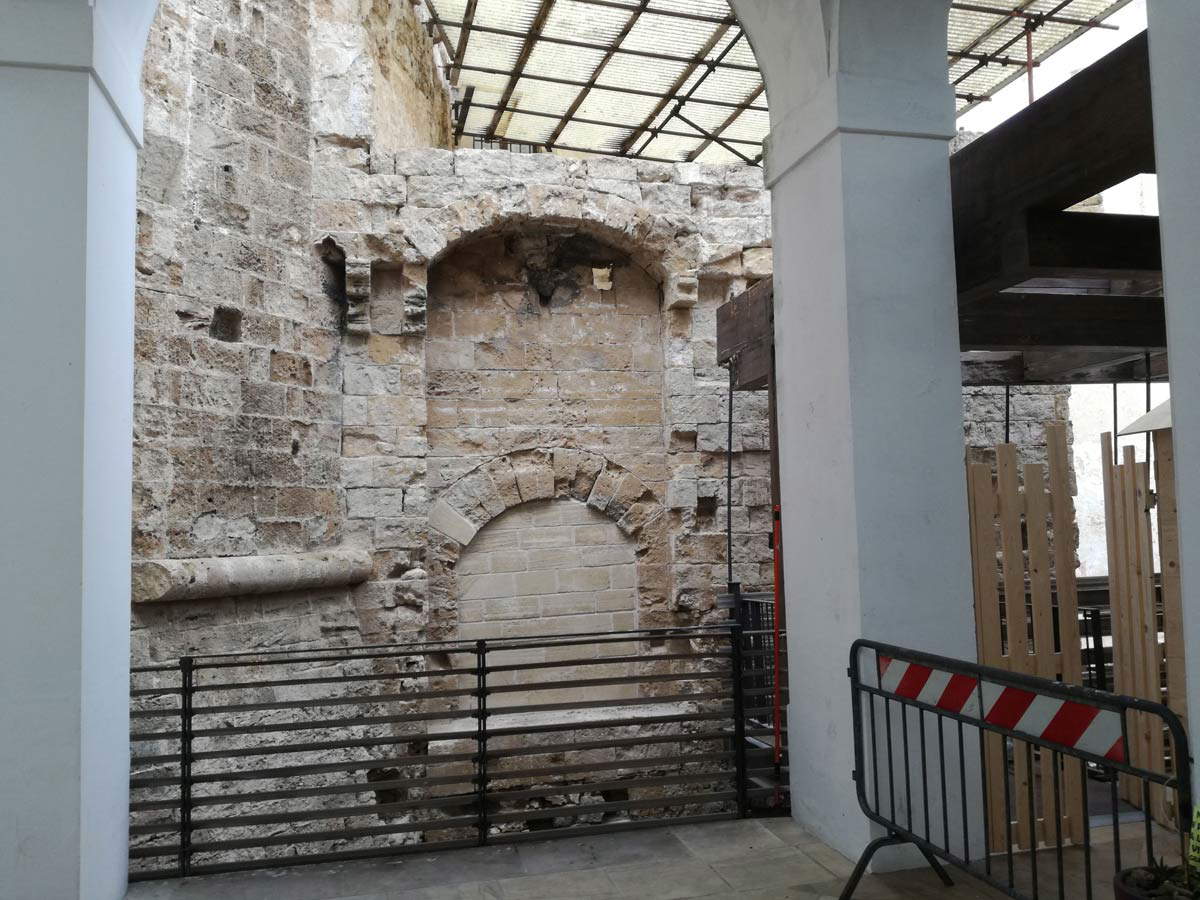

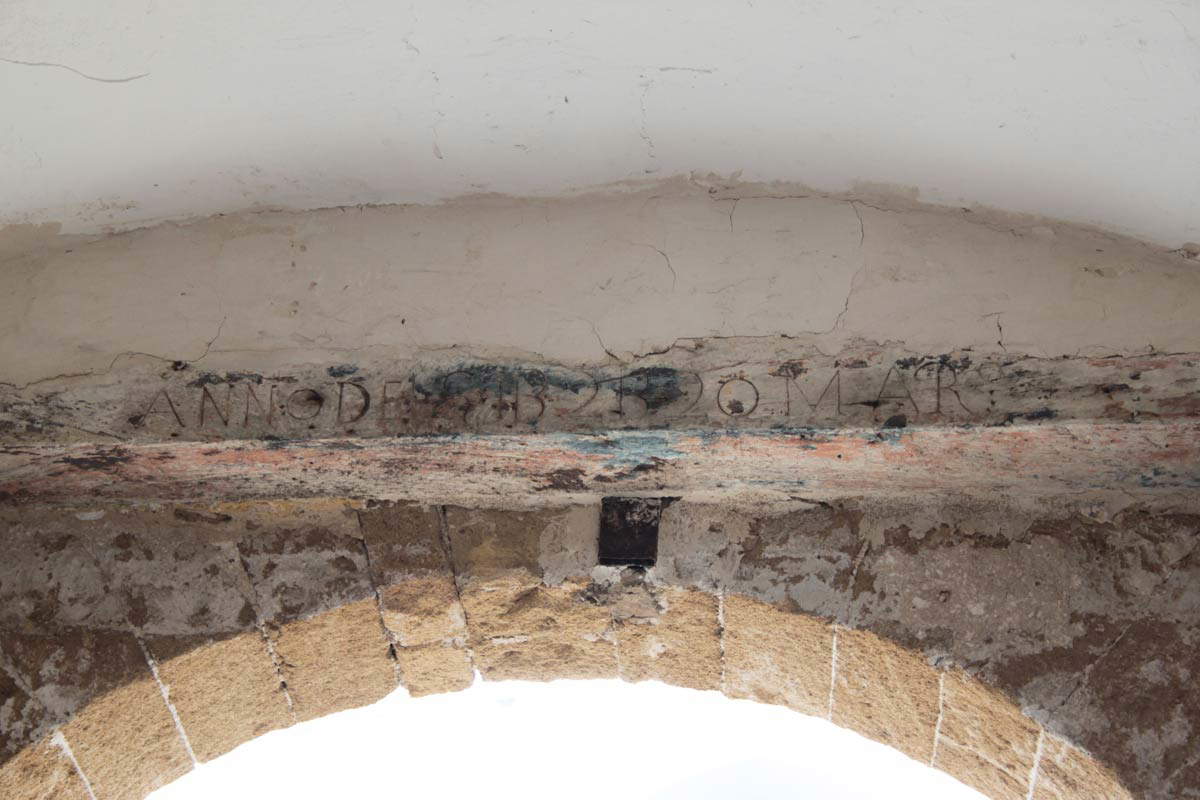
And it is precisely the context that provides a useful interpretive direction. Gallipoli, as is well known, stands on a kind of islet once connected through an isthmus cut in Aragonese times. The northeastern gate faced the mainland and plausibly arose as a function of that very isthmus later cut and equipped with a bridge (it cannot be ruled out that it may also have been thought of as a levatory). Suggesting that the northeast gate was the main gate for castle life is precisely the proximity between it and the access route from the mainland. This assertion is best made explicit with a question: in the presence of the two access gates to the medieval castle, the North - West and the North - East, why would the king’s soldiers use the first one, which forced them to lengthen the access route to the fortress and especially to pass through the city gate? The North - East gate was the most direct and shortest route to the castle for those coming from the mainland and was such even with respect to the fact that it was not under the control of the city itself. It was a guarantee of the freedom and independence of the Regi.
As for what was initially referred to as an “epigraph” for the sake of brevity, it must be said that it is a text engraved on the beam (Fig. 13) of the present gate (inner part); it reads: YEAR OF S(IGNORE) 1828 20 MAR(Z)O . In a recent study conducted by the Polytechnic University of Bari, not reading the text correctly, it was thought to be a 14th-century inscription so much so that this entrance was attributed to that medieval period.
Warning: the translation into English of the original Italian article was created using automatic tools. We undertake to review all articles, but we do not guarantee the total absence of inaccuracies in the translation due to the program. You can find the original by clicking on the ITA button. If you find any mistake,please contact us.